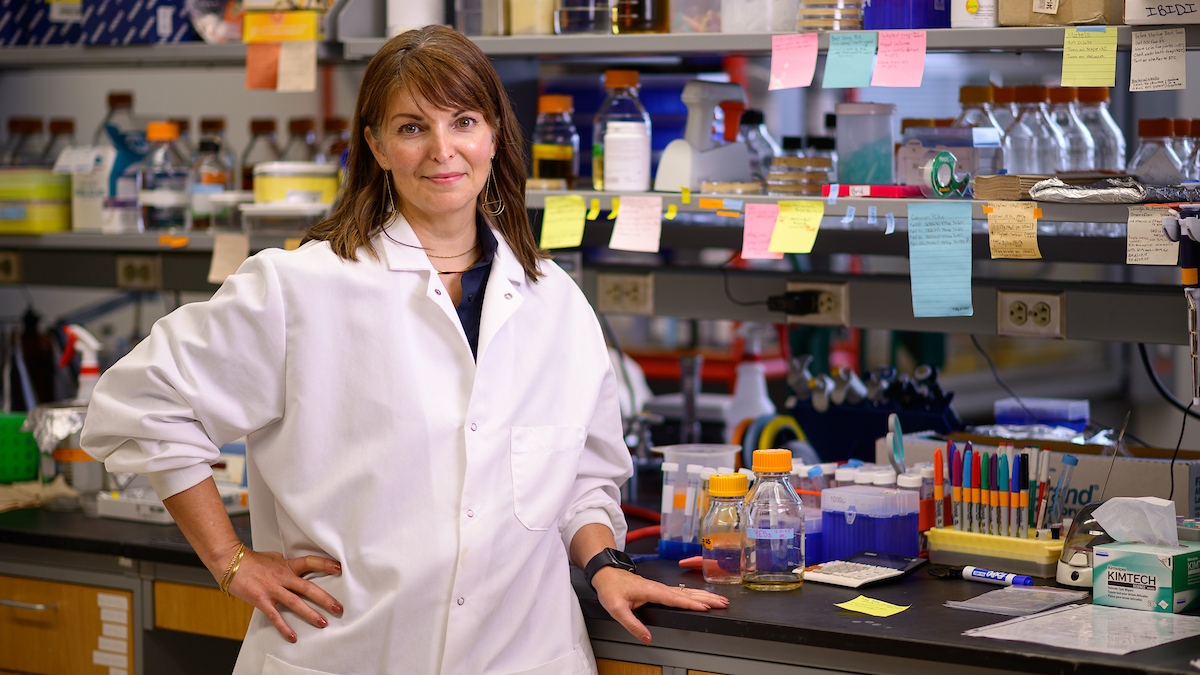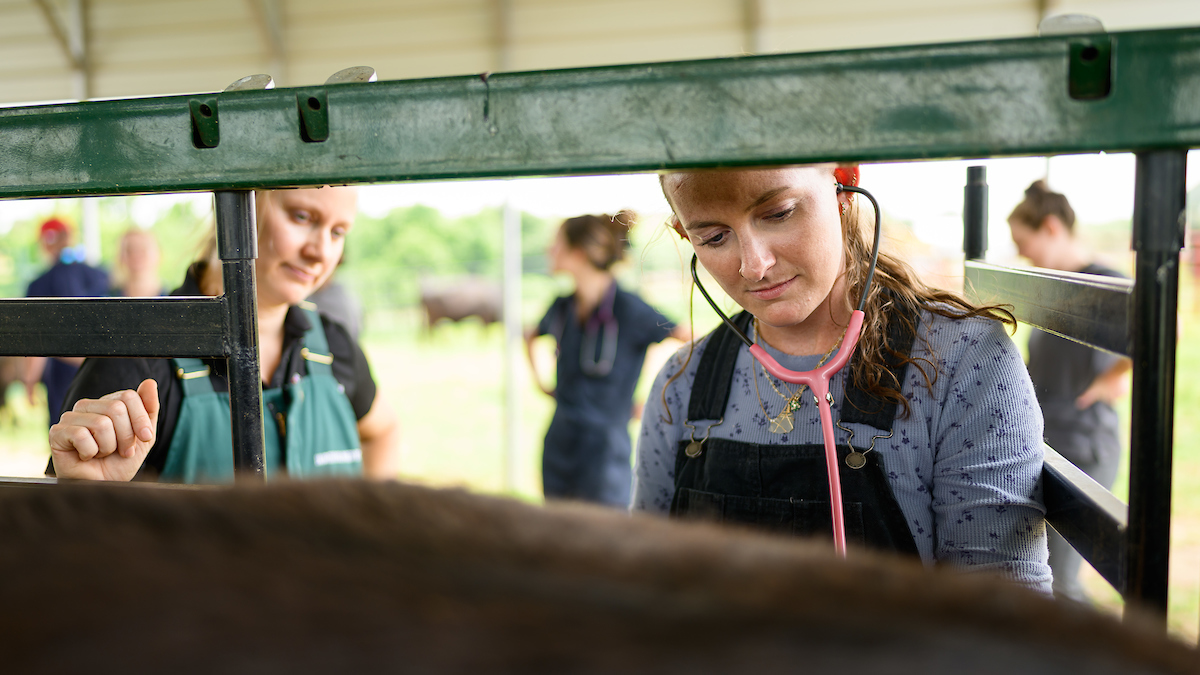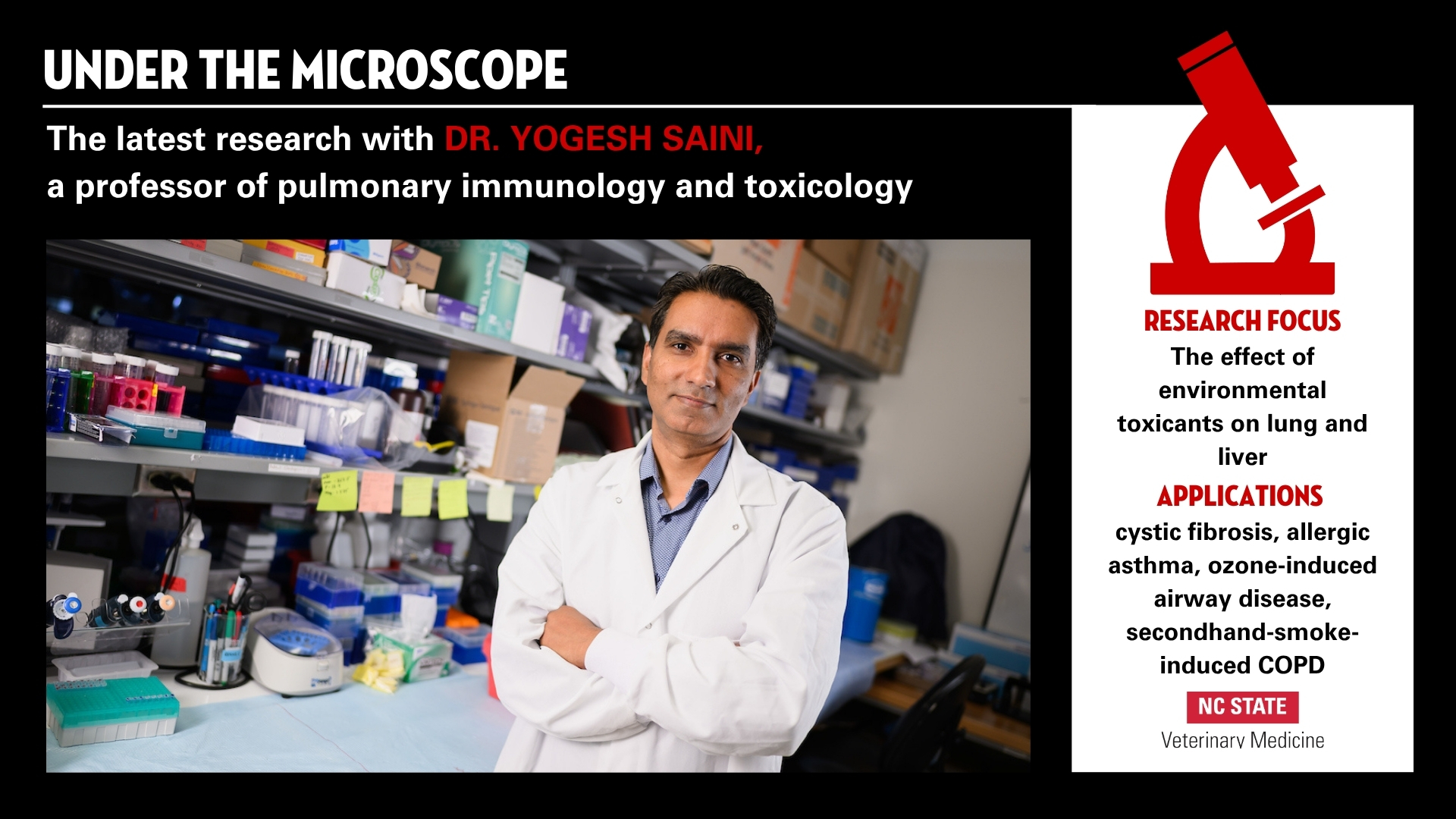Educational Support Services a Win-Win for NC State CVM Faculty, Students

Emily Ligon stands before a group of 16 faculty members scattered around a lecture hall. An instructional technologist, Lingon is leading the final workshop in a series about getting the most effective use of a course design tool at the NC State College of Veterinary Medicine.
The first slide appears on the screen in front of the room, Fingers tap at open laptops around the room.
Welcome to the future of education at the CVM.
The role of the Educational Support Services team at the college is evolving. Put simply, its focus has changed from assisting with the development of instructional materials to assisting with the development of enhanced instructional techniques. ESS helps faculty design, organize and share course content, and to improve the process of evaluating if students are really absorbing what they need to know and what could improve the learning process.
To implement this evolving mission, a new management team was put in place last year. ESS Director John Jeon has more than 20 years experience in instructional design and implementation, most recently at Utah State University and the University of Wisconsin. Leigh Jay Temple was recently made the assistant director of the department. Her expertise is with the advanced instructional technology that plays a key role in organizing and delivering course content, and in measuring student performance.
Continuously refining — and modernizing — how the CVM trains the next generation of veterinarians is a part of the college’s 10-year strategic plan. ESS is a big part of that.
“There’s value in embracing new and better ways of teaching, just as there is in embracing new and better approaches to medicine.” ~Amy Snyder
Amy Snyder is a satisfied customer. The CVM clinical assistant professor wanted to develop a course that introduced principles of accounting for veterinary students so they could incorporate the costs of doing business into their planning? She asked for Ligon’s help with the best approach to presenting the information.
When Snyder began teaching the course, Ligon’s assistance continued. She observed the classes and the two collaborated again, reviewing the results and making adjustments. Snyder is grateful for the continued help.
“The world of education is constantly evolving, just like medicine is evolving,” Snyder said. “There’s value in embracing new and better ways of teaching, just as there is in embracing new and better approaches to medicine.”

Recognizing the gap between information students receive and what they retain can be humbling for an educator, said Laura Nelson, CVM associate dean and director of academic affairs. Nelson developed her own teaching style by copying her favorite professors when she was a veterinary student.
“I was teaching the way I was taught, and when you do things that way you can quickly reach the end of your tether,” she said.
Another faculty member who praises the help available from the ESS team is Megan Jacob, associate professor in clinical microbiology and director of diagnostic laboratories at the CVM.
Megan Jacob, associate professor in clinical microbiology teaches the Infection and Immunity II course to first-year students, which covers types of bacterium and fungus and infectious diseases that the students won’t directly deal with again until their third year. Her mission is finding ways to teach the content effectively enough that they will be able to recall what they need to know two years later.
Ligon is working with Jacob to find ways to reorganize how the content is covered and restructure lectures.
With her help I’m translating what I’ve learned about the principles of good teaching practices into practical application,” Jacob said. “It not only helps the students, it helps me keep my own internal spark for teaching.”
Dealing with real-world problems like those described by Snyder and Jacob is what ESS professionals like Ligon are here to do.
“I once worked with someone who was very resistant to making changes in his approach to teaching,” said Ligon. “It took eight months to bring him around, but then he embraced it wholeheartedly. His students embraced it, too, and it made his teaching life much easier.”
~Steve Volstad/NC State Veterinary Medicine
- Categories:


